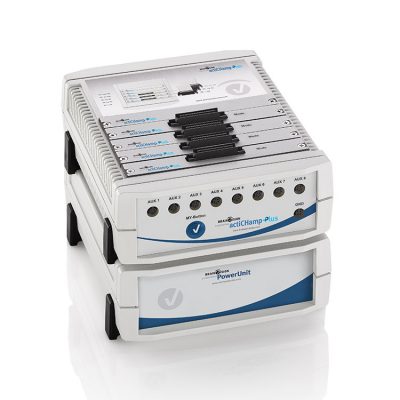EEG/ERP
For highest signal quality and flexibility in recordings, our all-in-one amplifier and our triggering device comprise the best solution for your lab-based EEG/ERP studies. Communication between our recording software and your stimulus presentation software ensure a smooth execution of your paradigm. After recording, use our easy to learn software for pre-processing and advanced EEG analysis.
Recommended solutions
Below you will find some of our recommended solutions for this application field. Depending on your research paradigm, other solutions may be more appropriate. For the optimal setup for your research goals, please contact your local distributor.
More resources
Reference labs
We enjoy the close contact we have with research groups using Brain Products equipment. In fact, these collaborations often help us improve our solutions, not just for one specific application field, but for all. We greatly appreciate the ongoing collaboration with these labs.
Action Lab
(Dresden, Germany)
website
Publications
Here are some papers related to this application field (published by the above mentioned reference labs):
- Santopetro, N. J., Brush, C. J., Bruchnak, A., Klawohn, J., & Hajcak, G. (2021). A reduced P300 prospectively predicts increased depressive severity in adults with clinical depression. Psychophysiology, 58(4). https://doi.org/10.1111/psyp.13767
- Brush, C. J., Burani, K., Schmidt, K. M., Santopetro, N. J., & Hajcak, G. (2021). The impact of a single session of aerobic exercise on positive emotional reactivity in depression: Insight into individual differences from the late positive potential. Behaviour Research and Therapy, 144, 103914. https://doi.org/10.1016/j.brat.2021.103914
- Kleimaker, M., Takacs, A., Conte, G., Onken, R., Verrel, J., Bäumer, T., Münchau, A., & Beste, C. (2020). Increased perception-action binding in Tourette syndrome. Brain, 143(6), 1934–1945. https://doi.org/10.1093/brain/awaa111
- Vahid, A., Mückschel, M., Stober, S., Stock, A.-K., & Beste, C. (2020). Applying deep learning to single-trial EEG data provides evidence for complementary theories on action control. Communications Biology, 3(1), 1–11. https://doi.org/10.1038/s42003-020-0846-z




